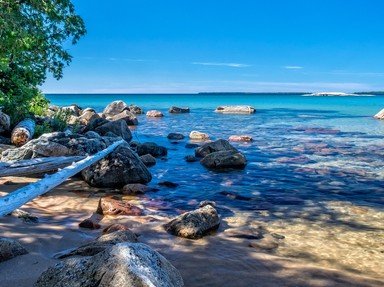Quiz Answer Key and Fun Facts
1. Is Lake Winnipeg one of the Great Lakes?
2. Approximately what percentage (rounded to the nearest tenth) of the Earth's freshwater lies in the Great Lakes basin?
3. By surface area, Lake _________ is the largest of the Great Lakes, and Lake __________ is the smallest of the Great Lakes.
4. The first European to see any of the Great Lakes was British.
5. In the early 21st century, how many people lived in the Great Lakes basin?
6. There have been some shipwrecks on the Great Lakes over the years. What was the last commercial ship to be wrecked on them in the 20th century?
7. When all of its islands are considered, which of the Great Lakes has the longest coastline?
8. Is it possible to drive around the Great Lakes?
9. What is the largest island in the Great Lakes?
10. Which of the Great Lakes is the shallowest, as measured by average depth?
Source: Author
Trivia_Fan54
This quiz was reviewed by FunTrivia editor
agony before going online.
Any errors found in FunTrivia content are routinely corrected through our feedback system.

